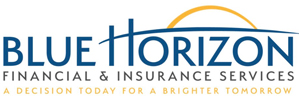Retirement planning in California has many unique challenges that residents of other states may not face. For example, California’s capital gains tax rate can reach as high as 25%, and its sales tax on real estate purchases can range from 1% to 10%. On top of that, the state’s income tax rates are higher than those of many other states, including neighboring Nevada and Arizona. These factors can add up quickly, so you might consider these 10 tips to make the most of your retirement planning in California.
1: Know What's Offered in the State
While there are some provisions that are common throughout all states, it’s also true that things can change depending on where you live. So be sure to get familiar with what each state has to offer when it comes to retirement planning opportunities, including any tax breaks and incentives. Not only will it save you time during your research phase, but it can give you a leg up on your competition when it comes time for business expansion. A little diligence at first could go a long way down the road.
2: Create an Emergency Fund
Having an emergency fund is crucial for retirement planning—and for life, really. When you have savings available for emergencies (like unexpected car repairs or medical bills), you can take care of those unexpected costs without having to put a significant strain on your budget. The ideal amount for your emergency fund depends on several factors, including how much debt you have and whether you’re still building toward your retirement goals. Ideally, you should have enough money set aside to cover at least three months’ worth of living expenses—including any potential contributions towards your retirement accounts. If that seems daunting, start by setting aside one month’s living expenses; once you’ve done that, continue adding to it until it reaches three months.
3: Look at Health Insurance Options

Looking at health insurance options is a great first step toward planning for retirement. If you’re not getting health benefits from your job, then finding affordable coverage on your own can be challenging and stressful. Moving on from an employer-sponsored plan is a big decision, but it’s likely one you’ll want to make sooner rather than later. The Affordable Care Act offers new protections against pre-existing conditions and lifetime maximums, as well as premium discounts for certain age groups. The open enrollment period typically takes place between November 15th and January 31st every year—be sure to check with your state marketplace for specific dates and information.
4: Consider Moving Into Assisted Living
While retirement communities have received a lot of press lately, they’re not always right for everyone. If you’re on your own and still relatively mobile, it might be wise to consider assisted living instead. Assisted living communities are tailored specifically for older adults who need some extra help with daily tasks like dressing or cooking. And because most people enter assisted living after their children have already moved out, you won’t have far to go if you need assistance with home maintenance or transportation. You can also ease into a community with just one person from your family joining you at first; that way, everyone gets used to the idea before you all make a permanent move.
5: Pay Off Debts While Retired
The best way to think about retirement planning is not so much as saving up for a particular event, but saving up for life—which means it’s your best bet to prioritize paying off debts. By staying on top of your debt payments, you’ll be able to maintain better cash flow and keep some extra money aside for retirement. And don’t forget that there are tax breaks out there that can help you save even more. (For example, if you’re self-employed you can deduct 100 percent of your health insurance costs.
6: Follow Federal Laws When Taking Distributions from Retirement Accounts
401(k)s, IRAs and other retirement accounts are often an important part of your financial planning—and for good reason. These accounts can help you save for retirement and also offer tax advantages. The one caveat? You must follow federal laws when taking distributions from these accounts. For example, if you’re younger than 59 1/2 years old, you must take withdrawals according to federal laws or pay a 10% penalty on amounts greater than $5,000 per year. If it’s been several years since you reviewed federal law regarding withdrawals from retirement accounts, consider checking out IRS Publication 575 or consulting with a professional before making any significant distribution decisions.
7: Evaluate & Adjust Plans

As you work on your retirement planning, don’t just look at it once and then stop paying attention. Evaluate, update, re-evaluate—it’s an ongoing process. Think about a time when you bought a pair of shoes that fit perfectly when you first put them on. But what happened after a few weeks or months? They felt tight again. Things change over time and that’s especially true for something as important as your retirement plans. If you have children or dependents, move downstate, get married—even make small changes like switching jobs or working part-time instead of full-time—your financial situation is going to change too.
8: Use Tax Free Investment Vehicles
After you’ve maxed out all your tax-advantaged retirement accounts, such as a 401(k) or traditional IRA, start using tax-free investment vehicles such as Roth IRAs and 529 college savings plans. What’s great about these is that they don’t have income limits like some other retirement savings options, which means everyone can take advantage. For example, anyone who earns up to $129,000 (in 2018) may contribute up to $5,500 into a Roth IRA. You can open a 529 college savings plan for any child under 18 years old regardless of their income level or how much you make yourself—and if you’re looking for ways on how to save for your kid’s future education costs , it’s an incredibly smart option.
9: Consider Buying Life Insurance Policies
As many as 80% of people who leave an employer-sponsored retirement plan do not roll their savings into an individual retirement account (IRA), opting instead for other investment products. While rolling your retirement savings into an IRA may be a smart decision, it’s not right for everyone. For example, if you’re planning on using that money within five years to pay off debt or fund your child’s education, you might want to consider buying a term life insurance policy instead. Insurance policies allow you to keep your cash liquid while still providing financial protection for loved ones in case something happens to you . . .
10: Stay Active & Healthy During Retirement Years
As you get older, it’s important to stay active and healthy. Because you don’t have as much time ahead of you, it’s especially critical that you make every second count. You need your body as physically fit as possible so you can enjoy retirement and still live out your golden years. For many people in their 60s, 70s and beyond, staying active is a key part of living a long and healthy life. Not only does exercise reduce stress and anxiety but also helps with sleep, circulation and overall health.
Here are 10 ways to keep yourself fit at any age:
- Stay Motivated
- Build Muscle
- Lift Weights
- Choose Quality Cardio
- Make Sure To Stretch
- Balance Exercise & Relaxation
- Use Technology
- Find A Trainer
- Find A Partner
- Start With A Walk And/or Swimming Pool Workout .
The benefits of remaining active through retirement far outweigh any costs associated with living an active lifestyle. Staying motivated is often one of the biggest challenges for retirees who want to maintain an active lifestyle during later stages of life when they may be more limited due to health reasons or increased physical limitations after decades of strenuous activity.





